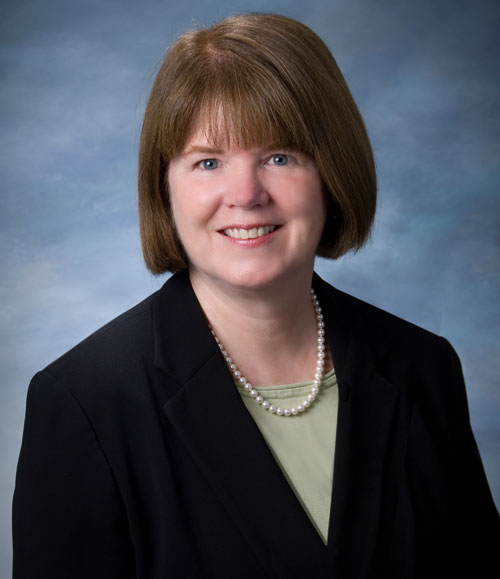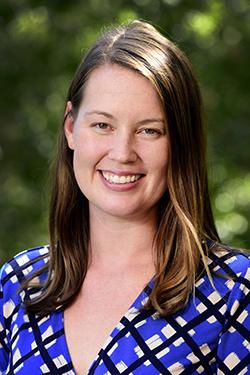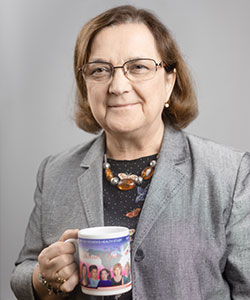Spring 2022 Seminars

THURSDAY, JANUARY 27, 2022 | Zoom 3:30 p.m.
Zhehui Luo, PhD
Professor of Epidemiology and Biostatistics
Michigan State University
"Correlated random effects models for zero-inflated outcomes: An estimation of the impact of a state sponsored Medicaid prenatal home visiting program for black pregnant women"
 View Seminar
View Seminar
Motivated by the need to evaluate a non-randomized program with zero-inflated count outcomes, we propose a correlated random effects model with unbalanced panels and use the simulated maximum likelihood estimation method to estimate the conditional effect of a multi-valued treatment. We then explore the potential to extend the Mundlak approach to this setting. We make three points in this paper (1) when the average treatment effects are the target parameters, others are all nuisance (from conditional models with correlated random slope to marginal between-within models); (2) the average treatment effect on the treated is sensitive to the proportion treated; and (3) no single method dominates the others for a causal effect of interest in observational studies.

THURSDAY, FEBRUARY 10, 2022 | Zoom 3:30 p.m.
Anne Marie Jukic, PhD
Epidemiology Branch
Fertility and Reproductive Health Group
National Institute of Environmental Health Sciences
Research Triangle Park, NC
“Vitamin D and reproduction: from observation to implementation.”
 View Seminar
View Seminar
Menstrual cycles are an indicator of general health and menstrual cycle disturbances may predict difficulties in conceiving a pregnancy. Moreover, women with menstrual cycle irregularities may be treated with hormonal contraception, and there are currently no alternatives for women who desire non-hormonal options to regulate their cycles. Vitamin D is known for its role in bone health, but its role in reproduction is a flourishing area of research. Low levels of vitamin D are common in the U.S., especially among African-American and Hispanic women. Dr. Jukic recently received a Bench-to-Bedside award to support a clinical trial that further investigates the role of vitamin D in menstrual cycles and menstrual cycle hormones. She is also collaborating on an NIEHS Internal Opportunity Award to investigate the biological pathways that are altered by vitamin D deficiency and repletion in a mouse model.

THURSDAY, FEBRUARY 24, 2022 | Zoom 3:30 p.m.
Sue Grady, PhD
Associate Professor
Geography, Environment, and Spatial Sciences
Michigan State University
"COVID-19 in Nursing Homes: Geographic Diffusion and Regional Risk Factors in the United States"
 View Seminar
View Seminar
Nursing homes in the United States have an enormous responsibility to protect their elderly residents from SARS-CoV-2 (COVID-19) infection. This study presents the geographic diffusion of COVID-19 cases and deaths in nursing homes from end of Week 1 24-May 2020 to Week 10 26-July 2020, while also providing regional explanations for this diffusion.

THURSDAY, MARCH 24, 2022 | Zoom 3:30 p.m.
Alexandra White, PhD, M.S.P.H.
Stadtman Investigator
Epidemiology Branch / Environment and Cancer Epidemiology Group
NIEHS
"Air pollution and Breast Cancer: Evaluating Exposure Mixtures and Underlying Pathways"
Although air pollution is an established risk factor for lung cancer, less is known about how air pollution is related to other cancer types. Increasingly epidemiologic studies suggest a relationship between air pollution and increased breast cancer risk. However, less is known about how different air pollution constituents may influence the risk of breast cancer and the underlying biologic pathways that may contribute to risk.

THURSDAY, APRIL 14, 2022 | C102 Patenge Room 3:30 p.m.
Jay Kaufman, PhD
Department of Epidemiology, Biostatistics, & Occupational Health
McGill University, Montreal, Quebec
“How to Break Something By Fixing It”
Recent years have witnessed a tremendous disciplinary cross-pollination in which epidemiology has borrowed heavily from other methodological traditions, for example the infusion of econometric methods into social and perinatal epidemiology. Methodological traditions arise within a field from its unique history and culture, including philosophical approaches to quantification and causal inference. To exemplify some of the differences in worldview between epidemiology and economics, I will highlight the handling of clustering, as both an analytic challenge (hierarchical data) and as a design strategy (matching). Causal tools from one discipline reveal the limitations and dangers of the practices that characterize the other. I review the good, the bad and the ugly from fixed effects designs like exposure-discordant siblings, and how insights from both epidemiology and economics balance the pros and cons of this method in health research.

THURSDAY, APRIL 28, 2022 | C102 Patenge Room 3:30 p.m. | Zoom
(In person seminar and available through Zoom)
Dorothy Pathak, PhD
Professor of Epidemiology and Biostatistics
Department of Epidemiology and Biostatistics
Michigan State University
"From Fun to Funding to Field and now to Findings: The story of the Polish Women's Health Study and of the Humble Cabbage."
In the early 1980s, an extensive literature review of breast cancer (BC) mortality revealed a contrast between Asian and Polish migrants. Asian-born women did not increase their BC mortality to the level of the host country to which they immigrated, although their daughters experienced this higher risk. However, Polish women increased their BC mortality to the level of the host country; 3 fold when migrating to the US, 2.2 fold to Wales, and 1.76 fold to Australia. As a Polish-migrant woman and epidemiologist interested in etiology and prevention of BC, I decided to focus my research on the evaluation of environmental factors which could contribute to this rapid increase in BC risk. Identification of cases had to be done through cancer registries in areas with high Polish migrant concentration. At that time, I was on faculty at University of New Mexico, an area with very few Polish-migrant women. So, something had to change.
I will present you with the very rewarding FINDINGS of this work and take you on a journey that started in the early 1980’s with a passion to understand this phenomenon. We will start with the FUN part, my move from New Mexico to Michigan State University, then look at the cycles of grant submissions that resulted in FUNDING and review some of the challenges that we faced in the FIELD. Then, I will provide you motivation for the cabbage hypothesis and present you with a table from my recent publication which shows how level of consumption of the humble cabbage, over life-course, contributes to a decreased risk of breast cancer. And this journey took just under 40 years.

